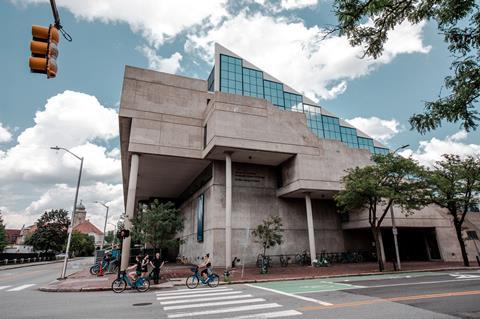When Chris Fogarty’s daughter expressed an interest in becoming an architect, it led him to a deeper understanding of how the US and UK education systems differ

“I want to be an architect” — six words I never expected to hear from my daughter! It certainly came as a shock. She had been leaning towards majoring in computer science at her small liberal arts college in Northern Maine. However, a brief ‘Intro to Architecture’ course captivated her in a way that simply growing up around me never did. Maybe she finally glimpsed why I enjoy it so much, despite it being such a tough profession with long, expensive studies and low financial rewards.
Now that she was bitten by the architecture bug, I thought I would be able to give her useful advice on how to approach studies and a career. After all, I’ve worked in the US for over 25 years, visiting various architectural schools as a critic or a lecturer. But as we investigated her options, it became painfully obvious that I didn’t really have a clue how it all worked. What followed was a crash course on the various paths US students take to pursue architecture.
At first glance, the architectural education systems in the UK and the US seem similar enough, with both requiring at the very least seven years to obtain licensure. The notable difference lies in the educational pathways. Unlike the UK’s Parts 1, 2, and 3 process of undergraduate and postgraduate architecture courses, the US system offers two alternate routes to completing your studies.
First, it’s worth remembering that students here, in their last years of school, have no A-level equivalent where they narrow their academic focus down to just three subjects. When they start their typical four-year college education, they initially spend two years taking various general education courses before selecting what subject to major in.
For these students, the path to becoming an architect involves a Master of Architecture (M.Arch) postgraduate programme. The length of these programmes varies based on prior education, but usually lasts two years for students with an undergraduate major degree in architecture and three years for those with a degree in another field.
The second path is a straightforward five-year Bachelor of Architecture (B.Arch) programme, similar to the UK system. Architecture and engineering are among the very few specialised professional subjects that students can pursue directly after high school. There are no undergraduate courses for law or medicine, for example.

B.Arch programmes are mostly found in the more vocational schools, often at state colleges, and some, such as Cornell, are exceptional. However, the majority of the top architectural schools are M.Arch programmes, such as MIT, Columbia, Yale, and Harvard. Often M.Arch schools provide an architecture major degree within their liberal arts undergraduate curriculum, while some B.Arch schools offer the M.Arch as part of their postgraduate studies.
Whichever path you take, the cost is always a significant factor. The cost of attendance at state colleges averages $25,000 per year, while private colleges can be at least double or even triple that amount. Many students take huge loans to complete their studies leading to hundreds of thousands of dollars of debt upon graduation.
After finishing either path, the next step is the Architectural Experience Programme (AXP) — an internship training period under a licensed architect, requiring over 3,500 recorded hours before completion — which is then followed by six Architect Registration Examinations (ARE). The AREs, covering both technical and professional aspects of architecture, are challenging and have an average 50% pass rate. The process is long and arduous, taking the average architect 12.5 years to finally get their licence after starting college.
Ultimately, it’s the high cost of education with its arduous licensing process and low financial compensation that makes our profession increasingly exclusive
Since my daughter’s college does not offer architectural courses, she faced a choice: either drop out and transfer to a B.Arch programme or continue with the undergraduate studies at her current college but focus on courses suitable for future M.Arch admission.
After chatting with many friends in education, the consensus was to complete her current college degree, integrating ‘pre-architecture’ courses, majoring in art or art history, and including courses in mathematics, computing, government, and sociology. During her holidays last summer, she enrolled in a five-week intensive architecture course at Columbia University to confirm her passion (she loved it) and plans to apply to an architecture post-graduate programme in a few years.
In the UK, the ARB and RIBA are hotly debating more effective methods of teaching architecture with the goal of promoting diversity and accessibility within the profession. It sounds like what could emerge is a similar system to here. While the US system offers more flexibility than the UK’s, it still struggles to meet the goals the ARB hopes to encourage. Ultimately, it’s the high cost of education with its arduous licensing process and low financial compensation that makes our profession increasingly exclusive.
>> Also read: The ARB education reforms offer tinkering, when what we need is a radical new vision
Postscript
Chris Fogarty is co-founding principal of Fogarty Finger
















1 Readers' comment